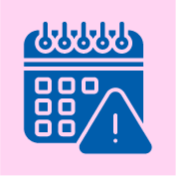If you too want to know how to create a day trading plan, here are the steps you need to cover:
Step 1: Be clear regarding your trading motivation and primary objectives
The first step is to have complete clarity regarding your objective. Answer the ‘why’, as it will be the foundation of all your future trading decisions. It will also be your guide when market situations are in flux and help you make the right decisions.
Step 2: Choose the trading approach you will take
Two approaches are widely popular when deciding on how to create a day trading plan,
- A fast-paced approach, where the trader will be on the lookout to book either a small profit or loss in a short span of time, usually minutes. The intention is to square off buying and selling by capitalising on minute stock prices.
- In this approach, a trader opens with a position in the first half and closes it by the end of the day. This method helps better gauge macroeconomic conditions and capitalise on any potential trends impacting the market or particular sector or industry.
Step 3: Make your checklist customised according to your requirements
A trader can get overwhelmed by too many signals before making a decision. To avoid confusion, it's important to find the indicators that work best for you. By using basic technical analysis, you can quickly spot the difference between a good and bad trade idea. Once you decide on the right number of signals that work for you, making decisions becomes easier without breaking your own rules.
Step 4: Be clear about your risk tolerance
Risk tolerance is the amount of risk you are willing and able to take when making investments or trades, and it is not driven by emotions. Long-term investors have ample time and patience for a stock price to move up, but intraday traders only have a few hours. Hence, it is important to assess your risk appetite and then decide accordingly.
Step 5: Set up a schedule of trading that also encompasses the frequency of your trade
In intra-day trading, the most effective method is to implement strategies that work well at a specific time of the day and then trade at the same time every day.
Step 6: Identify the conditions that would cause you to exit a trade
Most traders often focus on entry points and confluences without developing an exit plan for a trade. It is crucial that intraday traders also work on strategies or rules that will help them get out of a trade that is not working in their favour.
Step 7: Determine and follow rules for risk management (At both entry & exit levels)
Risk management will give you a macroscopic view of the overall pitfalls or risks that may be associated with a trade and the potential of losses. Make sure you have a risk management plan in place before starting intraday trading to protect your capital and minimise losses.
Step 8: Understand how charts are read
As an intraday trader, you will have to know how to read multiple charts that include line charts, bar charts, and candlestick charts. Candlestick charts are the most popular as they offer comprehensive information in an easy-to-understand manner. Similarly, there are one-minute charts and hourly charts that track performances every minute or hour.
Step 9: Acknowledge and understand market correlations
Historical market correlations, like the NYSE influencing the BSE, can guide future trading decisions by estimating market direction, though they're not guaranteed. Using these correlations with a solid risk management plan helps make informed, calculated trades.









 Deals starting @99
Deals starting @99 Festive deals
Festive deals Min. 50% off
Min. 50% off
 Wallet to Bank
Wallet to Bank
 Loan Against Shares
Loan Against Shares Loan Against Mutual Funds
Loan Against Mutual Funds Loan Against Insurance Policy
Loan Against Insurance Policy ESOP Financing
ESOP Financing Easy EMI Loan
Easy EMI Loan Two-wheeler Loan
Two-wheeler Loan Loan for Lawyer
Loan for Lawyer Industrial Equipment Finance
Industrial Equipment Finance Industrial Equipment Balance Transfer
Industrial Equipment Balance Transfer Industrial Equipment Refinance
Industrial Equipment Refinance Personal Loan Branch Locator
Personal Loan Branch Locator Used Tractor Loan
Used Tractor Loan Loan Against Tractor
Loan Against Tractor Tractor Loan Balance Transfer
Tractor Loan Balance Transfer
 Smartphones
Smartphones Led TVs
Led TVs Washing Machines
Washing Machines Laptops
Laptops Refrigerators
Refrigerators Air Conditioner
Air Conditioner Air Coolers
Air Coolers
 Get Bajaj Prime
Get Bajaj Prime
 Trading Account
Trading Account Open Demat Account
Open Demat Account Margin Trading Financing
Margin Trading Financing Share Market
Share Market Invest in IPO
Invest in IPO All stocks
All stocks Top gainers
Top gainers Top losers
Top losers 52 week high
52 week high 52 week low
52 week low Loan against shares
Loan against shares
 Business Loan
Business Loan Secured Business Loan
Secured Business Loan Loan against property
Loan against property Loans against property balance transfer
Loans against property balance transfer Loan against shares
Loan against shares Home Loan
Home Loan Loans against mutual funds
Loans against mutual funds Loan against bonds
Loan against bonds Loan against insurance policy
Loan against insurance policy
 Term Life Insurance
Term Life Insurance ULIP Plan
ULIP Plan Savings Plan
Savings Plan Family Insurance
Family Insurance Senior Citizen Health Insurance
Senior Citizen Health Insurance Critical Illness Insurance
Critical Illness Insurance Child Health Insurance
Child Health Insurance Pregnancy and Maternity Health Insurance
Pregnancy and Maternity Health Insurance Individual Health Insurance
Individual Health Insurance Low Income Health Insurance
Low Income Health Insurance Student Health Insurance
Student Health Insurance Group Health Insurance
Group Health Insurance Retirement Plans
Retirement Plans Child Plans
Child Plans Investment Plans
Investment Plans
 Apply for Gold Loan
Apply for Gold Loan Transfer your Gold Loan with Us
Transfer your Gold Loan with Us Gold Loan Branch Locator
Gold Loan Branch Locator
 ULIP Plan
ULIP Plan Savings Plan
Savings Plan Retirement Plans
Retirement Plans Child Plans
Child Plans Free Demat Account
Free Demat Account Invest in Stocks
Invest in Stocks Invest in IPO
Invest in IPO Margin Trading Facility
Margin Trading Facility Fixed Deposit Branch Locator
Fixed Deposit Branch Locator

 Bike
Bike Scooter
Scooter Electric Vehicle
Electric Vehicle Best Sellers
Best Sellers Popular Brands
Popular Brands
 Check your Credit Score
Check your Credit Score
 Engagement Zone
Engagement Zone Game Zone
Game Zone
 New Car Loan
New Car Loan Used Car Loan
Used Car Loan Loan Against Car
Loan Against Car Car Loan Balance Transfer and Top-up
Car Loan Balance Transfer and Top-up

 Personal Loan EMI Calculator
Personal Loan EMI Calculator Personal Loan Eligibility Calculator
Personal Loan Eligibility Calculator Home Loan EMI Calculator
Home Loan EMI Calculator Home Loan Eligibility Calculator
Home Loan Eligibility Calculator Good & Service Tax (GST) Calculator
Good & Service Tax (GST) Calculator Flexi Day Wise Interest Calculator
Flexi Day Wise Interest Calculator Flexi Transaction Calculator
Flexi Transaction Calculator Secured Business Loan Eligibility Calculator
Secured Business Loan Eligibility Calculator Fixed Deposits Interest Calculator
Fixed Deposits Interest Calculator Two wheeler Loan EMI Calculator
Two wheeler Loan EMI Calculator New Car Loan EMI Calculator
New Car Loan EMI Calculator Used Car Loan EMI Calculator
Used Car Loan EMI Calculator All Calculator
All Calculator
 Hot Deals
Hot Deals Clearance Sale
Clearance Sale Kitchen Appliances
Kitchen Appliances Tyres
Tyres Camera & Accessories
Camera & Accessories Mattresses
Mattresses Furniture
Furniture Watches
Watches Music & Audio
Music & Audio Cycles
Cycles Mixer & Grinder
Mixer & Grinder Luggage & Travel
Luggage & Travel Fitness Equipment
Fitness Equipment Fans
Fans
 Personal Loan for Doctors
Personal Loan for Doctors Business loan for Doctors
Business loan for Doctors Medical Equipment Finance
Medical Equipment Finance Secured Business Loan
Secured Business Loan Loan against property
Loan against property Loan against share
Loan against share Gold Loan
Gold Loan Home Loan
Home Loan
 Smartphones
Smartphones LED TVs
LED TVs Washing Machines
Washing Machines Laptops
Laptops Refrigerators
Refrigerators Air Conditioners
Air Conditioners Air Coolers
Air Coolers Water Purifiers
Water Purifiers Tablets
Tablets Kitchen Appliances
Kitchen Appliances Mattresses
Mattresses Furniture
Furniture Music and Audio
Music and Audio Cameras & Accessories
Cameras & Accessories Cycle
Cycle Watches
Watches Tyres
Tyres Luggage & Travel
Luggage & Travel Fitness Equipment
Fitness Equipment Tractor
Tractor
 Home Loan
Home Loan Transfer your existing Home loan
Transfer your existing Home loan Loan against Property
Loan against Property Home Loan for Salaried
Home Loan for Salaried Home loan for self employed
Home loan for self employed Home Loan EMI Calculator
Home Loan EMI Calculator Home Loan eligibility calculator
Home Loan eligibility calculator Home Loan balance transfer
Home Loan balance transfer
 Easy EMI
Easy EMI Offer World
Offer World 1 EMI OFF
1 EMI OFF New Launches
New Launches Zero Down Payment
Zero Down Payment Clearance Sale
Clearance Sale Bajaj Mall Sale
Bajaj Mall Sale
 Articles
Articles
 Overdue Payments
Overdue Payments Other Payments
Other Payments
 Document Center
Document Center Bank details & Documents
Bank details & Documents Tax Invoice Certificate
Tax Invoice Certificate
 Do Not Call Service
Do Not Call Service
 Your Orders
Your Orders Hamara Mall Orders
Hamara Mall Orders

 Fixed Deposit (IFA) Partner
Fixed Deposit (IFA) Partner Loan (DSA) Partner
Loan (DSA) Partner Debt Management Partner
Debt Management Partner EMI Network Partner
EMI Network Partner Become a Merchant
Become a Merchant Partner Sign-in
Partner Sign-in
 Faster, Easier Gold Loan
Faster, Easier Gold Loan Digi Sarkar
Digi Sarkar Used Tractor Loan
Used Tractor Loan Check Loan Offer
Check Loan Offer Mobiles on EMI
Mobiles on EMI Live Videos
Live Videos
















